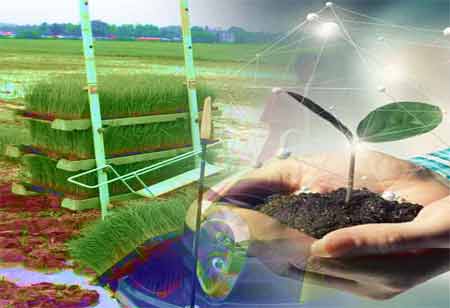Thank you for Subscribing to Agri Business Review Weekly Brief
Agronomy, The New-gen Agriculture Guide
The evolution of agriculture has enabled a shift from relying on mere advice from the old generation to scientific innovations.

By
Agri Business Review | Thursday, March 09, 2023
Stay ahead of the industry with exclusive feature stories on the top companies, expert insights and the latest news delivered straight to your inbox. Subscribe today.
With the agricultural experts shifting their focus from pre-described advice to scientific innovations, agronomy is likely gaining favour and importance in the sector.
FREMONT, CA: The evolution of agriculture has enabled a shift from relying on mere advice from the old generation to scientific innovations. The concept of agronomy denotes the application of scientific theories, be they biological, ecological, economic, or technological, in the farming processes, focusing on field crops produced on an increased scale—wheat, corn, and soybeans. It also contains crops that are considered food staples for livestock, providing fibres for basic fabric.
Often referred to as a subsection of agronomy, agricultural economics, or agronomics, denotes the application of economic methods and models over the critical decisions of farmers. Generally, farms and individuals harnessing agronomics research rely on basic economics and business techniques in handling both small and large-scale farms, like farm financial management, market research, pricing, supply and demand, market structures, and development.
From growing and raising a variety of crops and livestock through a main agronomic crop for selling over a stabilised income, agronomics holds an induced focus on claiming the most economic value, especially for the least amount of seed, land, and labour in the space. As a result, an intensified concern about agronomy and agronomics has peaked in recent times among environmentalists, scientists, and entrepreneurs. Increased usage of plants in manufacturing bio-fuels for vehicles and heavy machinery has furthermore underlined the need to elevate the crop production ratio, thereby meeting the rising demands in both the industrial and food sectors.
Scientists must ensure that increased crop output has a positive impact on soil chemistry and natural resources. Hence, agronomics is focussing on a more responsible, sustainable, and induced agronomic growth-driven space with an improved working pattern, thereby mitigating the protracted negative impacts of agriculture on natural ecosystems. Agronomy also includes several other arenas like crop rotation, soil chemistry, irrigation, and drainage, where rotating varied crop species on the same fields enables agronomists and farmers to control the growth of parasites and insects, which are often attracted to and survive on integrated types of plant.
Plants often absorb their nutrients directly from the soil; thus, each plant comprises different sources and compositions of nutrients, and crop rotation, ensures the fertility rate of the soil with adequate balanced minerals, nutrients, and microorganisms in the soil. Additionally, a critical study on chemical reactions in the agricultural soil relating to critical crop growth and output is comparatively crucial and encompasses mineral composition, mobility, and toxicity of soil contaminants. Hence, organisations ought to clean up and remediate contaminated land, in addition to efficient tracking of agronomists, to ensure the contamination rate of crops.





